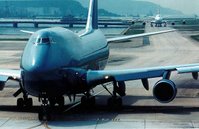Secure Flight – Opportunity Knocks
Kip Hawley's Journal
November 1, 2007

Keeping known terrorists off airplanes is one of the obvious first steps of transportation security. The No-Fly list is the primary method that makes this possible. Today, anybody identified as a “No-Fly” is kept from boarding any flight to or in the United States. That’s the good news. The bad news is that today, the government has to rely on the airlines – including international carriers – to do the matching. There is no reason to think that this system is letting “No-Flys” on planes, but there is plenty of evidence that many ordinary passengers get wrongly drawn into the no-fly filter of a given airline.
Most people who cannot get a boarding pass at home or at a kiosk are caught in that filter – their name is probably similar to someone on the real No Fly (not allowed to fly) or Selectee (subject to extra screening) watchlists. The watchlists aren’t excessively long, but often that’s the perception based on the number of people who think they must be watchlisted if they have to report to an airline counter. My experience is that people who are watchlisted, especially “No-Flys,” are well-aware of the reason and do not usually seek out conversations with security or law enforcement personnel. On the other hand, people who are confused with “No-Flys” are vocal indeed.
How do we fix this? Secure Flight is the program that will take the watchlist-matching process inside the government. This will have obvious security benefits and should solve the “false positive” issue where ordinary passengers have to explain that they are not the person on the list. This is especially true of those with non-Western names where there are spelling inconsistencies. That--essentially a software matching issue--is often taken as an indication that the government is doing inappropriate racial or ethnic profiling. We are not and will not.
So, when is this going to be fixed? The government wants it quickly for the security reasons (it is a core recommendation of the 9/11 Commission), travelers want it quickly for that reason and to eliminate the hassle that comes with false positive matches.
Implementation of this advanced prescreening system is also one of the key aviation security performance expectations established by the Government Accountability Office (GAO) in its assessment of the Department’s progress toward protecting the nation’s transportation network.
We have made major strides toward implementing Secure Flight. In the past, there have been valid privacy and program concerns, but the program released for public comment fixed those issues. In March 2007, TSA completed a total rebaselining, or redesign, of the program. It is now streamlined around name-based matching against the terrorist watch lists and has built-in privacy protections.
In August 2007, TSA published a Notice of Proposed Rulemaking (NPRM) proposing implementation of the Secure Flight program. The Department, TSA, and U.S. Customs and Border Protection have released a Consolidated User Guide to airlines, which includes proposed guidance for program compliance. Airlines have been asked to provide comments to TSA on that guidance.
Over the next few months, TSA expects to begin a benchmark testing period using information volunteered from airlines for the purpose of validating program assumptions.
TSA is working with the Congress to fund the program as part of Fiscal Year 2008 appropriations. With the necessary funding for Secure Flight, TSA can move forward with important contract awards and benchmark testing with airlines and later, parallel operations with airlines and the stand up of the Secure Flight Service and Operations Centers. When Secure Flight is up and running, the trip through the airport will be easier for passengers and more difficult for those who would do us harm.
Kip Hawley
Administrator
Transportation Security Administration


